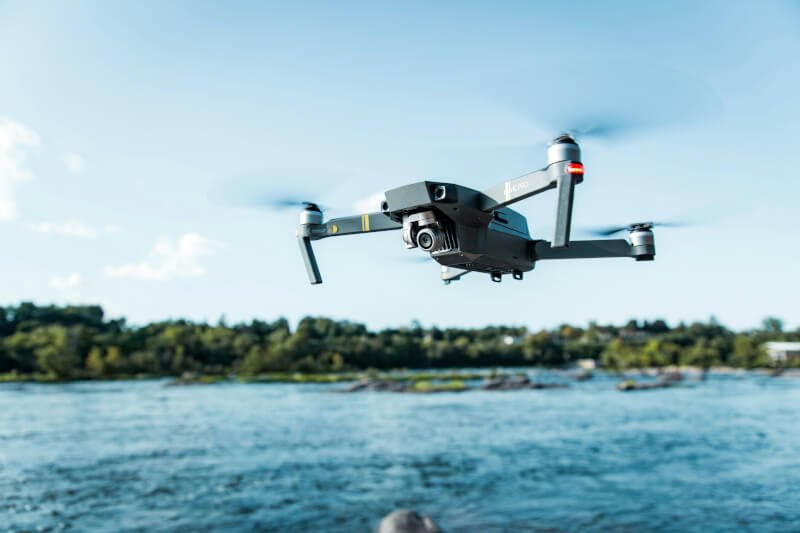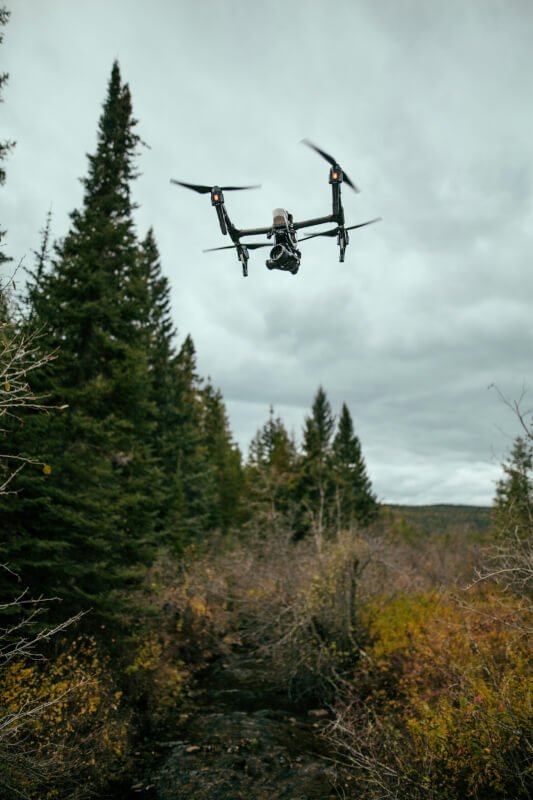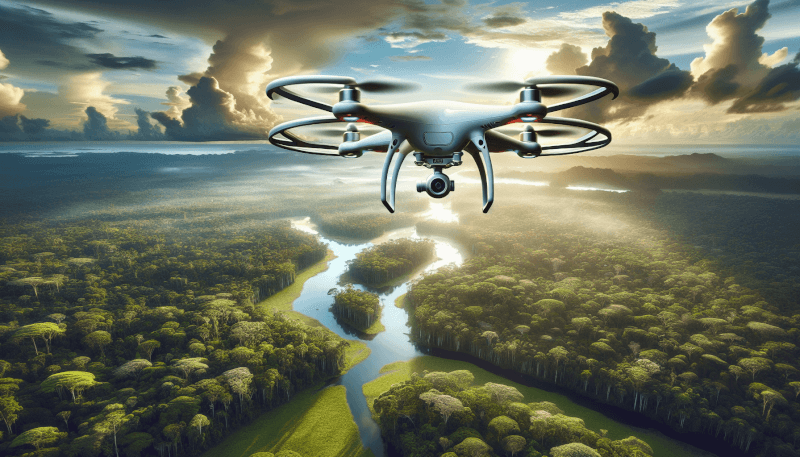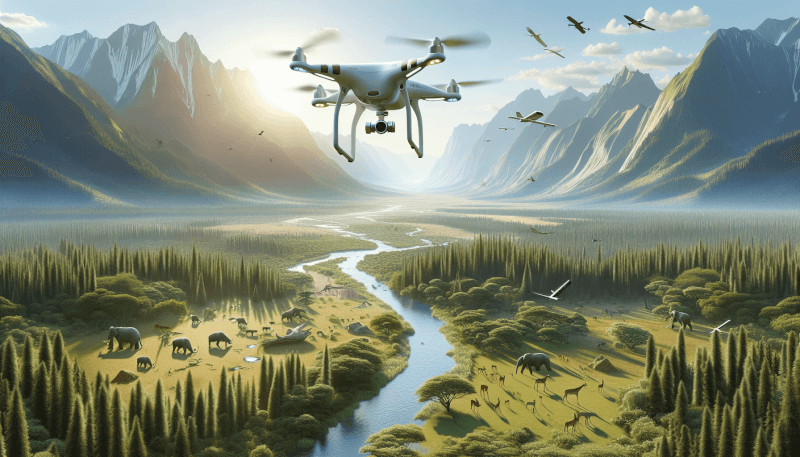Imagine a world where drones are not just gadgets for aerial photography and delivery services. In recent years, these unmanned aerial vehicles have found a new purpose – as valuable tools in wildlife conservation and anti-poaching efforts. With their ability to cover large areas quickly and quietly, drones have become essential in monitoring wildlife populations, identifying poaching hotspots, and even deterring illegal activities. In this article, we will explore the fascinating ways drones are making a positive impact in protecting our precious wildlife and combating the devastating effects of poaching.
Surveillance and Monitoring
Identification of wildlife populations
Drones have revolutionized the field of wildlife conservation by providing an effective and efficient means of identifying and monitoring wildlife populations. With their aerial capabilities, drones can survey vast areas of land and water, capturing high-resolution images and videos that allow scientists and conservationists to accurately estimate population sizes and track changes over time. This information is invaluable in understanding the health and trends of various species, enabling targeted conservation efforts.
Tracking animal movements
Another significant benefit of drone technology in wildlife conservation is the ability to track the movements and behaviors of animals. Drones equipped with advanced sensors and thermal imaging cameras can detect and follow animals as they migrate, forage or establish territories. This real-time data allows researchers to gain insights into migration patterns, identify key habitats and corridors, and develop strategies to minimize human-wildlife conflicts, ultimately contributing to more effective conservation planning and management.
Nesting and breeding observation
Drones have proven to be an invaluable tool in observing and studying nesting and breeding behaviors of various wildlife species. Traditional methods of monitoring nests and breeding sites often require disturbance to the animals and their habitats. However, drones equipped with high-quality cameras can discreetly capture vital information about nesting patterns, breeding success, and the overall health of these vulnerable populations. Such data is crucial for conservationists to implement targeted measures to protect these critical reproductive sites and ensure the survival of endangered species.
Monitoring habitat changes
One of the challenges faced by conservationists is monitoring and assessing habitat changes, especially in remote or inaccessible locations. Drones equipped with aerial mapping technology can create detailed and accurate maps of landscapes, helping conservationists monitor deforestation, encroachment, and other habitat alterations. By tracking these changes over time, conservationists can prioritize their efforts and work towards protecting and restoring habitats, which are crucial for the survival of many wildlife species.
Anti-Poaching Patrols
Detection and deterrence of poachers
Poaching remains a grave threat to wildlife populations across the globe, and drones have emerged as a powerful tool in the fight against this illegal activity. Equipped with advanced surveillance cameras, drones enable conservationists and law enforcement agencies to monitor vulnerable areas and detect any suspicious activities. The ability to remotely monitor vast territories reduces the risk of human patrols, while the highly visible presence of drones acts as a deterrent to potential poachers, significantly reducing the incidence of wildlife crime.
Quick response to illegal activities
Drones play a crucial role in enabling rapid response to illegal activities in protected areas. When suspicious activities are detected, drones can quickly transmit real-time footage to law enforcement agencies, enabling them to respond promptly and effectively. This immediate response increases the chances of apprehending poachers and confiscating illegal wildlife products, ensuring that the perpetrators are brought to justice.
Gathering evidence for prosecution
In addition to being an effective deterrent and providing real-time monitoring, drones also serve as invaluable tools for collecting actionable evidence for prosecution. By capturing high-resolution images and videos of poaching incidents and the illegal wildlife trade, drones provide crucial evidence that can be used to build strong cases against offenders. This evidence, combined with the remote access provided by drones, greatly enhances the ability to combat wildlife crime and bring the perpetrators to justice.

Rapid Wildlife Surveys
Efficient data collection over large areas
Traditional wildlife surveys can be time-consuming and labor-intensive, often requiring extensive fieldwork and manual data collection. Drones, on the other hand, offer a much more efficient approach, allowing for rapid data collection over large areas. Equipped with multispectral and hyperspectral sensors, drones can capture detailed information about vegetation cover, land use, and other environmental parameters. This data is then utilized to assess biodiversity, identify key habitats, and determine the overall health of ecosystems, enabling targeted conservation efforts.
Biodiversity assessment
Understanding the biodiversity of an area is essential for effective conservation planning, and drones have emerged as powerful tools for conducting biodiversity assessments. By capturing aerial images and videos, drones allow researchers to identify and map different species and their distribution patterns. This information provides valuable insights into the richness and uniqueness of ecosystems, helping prioritize areas for conservation and restoration activities.
Mapping and cataloging species
Drones equipped with high-resolution cameras and advanced image processing software can facilitate the mapping and cataloging of species. By capturing detailed imagery of wildlife, such as birds, mammals, and reptiles, drones help create accurate inventories of species present in a particular area. This data can then be used to monitor population trends, identify habitats that require immediate conservation attention, and assess the effectiveness of existing conservation efforts.
Battling Illegal Wildlife Trade
Monitoring illegal trading routes
The illegal wildlife trade is a lucrative and widespread criminal activity that poses a significant threat to many endangered species. Drones equipped with GPS tracking capabilities can be used to monitor and document illegal trading routes. By patrolling and collecting data on known smuggler pathways, drones enable law enforcement agencies to gather valuable intelligence, identify key players, and intercept illegal wildlife trafficking operations, helping to disrupt these illicit networks.
Identifying smuggling activities
Drones equipped with thermal imaging and night vision technology are particularly effective in identifying smuggling activities. These advanced sensors can detect the movement of people and vehicles involved in illegal wildlife trade, even during nighttime or in dense foliage. By providing real-time intelligence on smuggling activities, drones empower law enforcement agencies to plan targeted interventions, intercept smugglers, and seize illegal wildlife products before they reach the black market.
Intercepting wildlife trafficking operations
Drones not only help identify smuggling activities, but they also play a vital role in disrupting wildlife trafficking operations. By coordinating with law enforcement agencies on the ground, drones can guide interception teams to the precise location of illegal activities. This strategic advantage allows for more effective and timely interventions, enabling authorities to apprehend traffickers, rescue wildlife in transit, and dismantle the criminal networks fueling the illegal wildlife trade.

Protection of Endangered Species
Finding and protecting critically endangered species
Locating and protecting critically endangered species is a vital component of wildlife conservation, and drones have proven to be an invaluable asset in this endeavor. Equipped with aerial cameras and thermal imaging technology, drones can survey vast areas of habitat, enabling researchers to identify and monitor populations of endangered species. This information helps conservationists focus their efforts on protecting critical habitats, implementing targeted conservation measures, and ensuring the survival of these species for future generations.
Monitoring animal health and behavior
Understanding the health and behavior of endangered species is crucial for their long-term survival. Drones equipped with specialized sensors and cameras can provide valuable insights into the health, stress levels, and overall behavior of wildlife. By collecting data on factors such as heart rate, hormone levels, and movement patterns, drones enable researchers to assess the well-being of endangered species and implement appropriate conservation strategies, such as habitat restoration, disease monitoring, and population management.
Ensuring breeding success
Successful breeding is vital for the recovery of endangered species, and drones play a significant role in ensuring the breeding success of these vulnerable populations. Drones equipped with high-resolution cameras and thermal imaging sensors can monitor nesting and breeding sites without disturbing the animals, enabling researchers to assess reproductive success, identify potential threats, and implement measures to protect breeding grounds. This proactive approach significantly increases the chances of successful breeding and ultimately contributes to the recovery of endangered species.
Community Engagement and Education
Promoting conservation awareness
Community engagement and education are essential in fostering a culture of conservation and sustainable practices. Drones can be used as powerful educational tools to raise awareness about wildlife conservation and the importance of protecting natural resources. By capturing stunning aerial footage of ecosystems and wildlife, drones create engaging visual content that can be shared with local communities, schools, and online platforms, inspiring people to appreciate and contribute to conservation efforts.
Educating local communities
Drones provide an innovative and engaging platform for educating local communities about wildlife conservation. By organizing workshops and demonstrations, conservationists can showcase the technology’s capabilities and explain its significance in protecting the local wildlife and environment. Drones can also be used to introduce community members to wildlife monitoring techniques and involve them in citizen science initiatives, promoting a sense of ownership and collaboration in conservation efforts.
Encouraging sustainable practices
Drones can play a crucial role in promoting sustainable practices among local communities. By monitoring land use and resource extraction activities, drones can help identify unsustainable practices that contribute to habitat degradation and wildlife loss. This information can then be shared with local communities, empowering them to adopt more sustainable livelihood options, such as eco-tourism, organic farming, or responsible fishing. By highlighting the environmental and economic benefits of sustainable practices, drones contribute to long-term conservation and community well-being.

Aerial Seed Dispersal
Reforestation efforts
Deforestation poses a significant threat to the world’s forests, and drones offer a unique solution to aid in reforestation efforts. Equipped with seed dispersal mechanisms, drones can efficiently plant tree seeds over large and inaccessible areas. By autonomously flying and dispersing seeds, drones not only speed up the reforestation process but also minimize the need for manual labor, reducing costs and increasing the overall efficiency of restoration projects.
Restoration of ecosystems
In addition to reforestation, drones can contribute to the restoration of entire ecosystems. By dispersing seeds of various plant species, drones can help restore biodiversity in degraded areas. Drones can also be used to transport and plant saplings, ensuring proper distribution and maximizing the chances of successful ecosystem restoration. By accelerating the restoration process, drones aid in reclaiming habitats and creating resilient ecosystems that can support diverse wildlife populations.
Enhancing habitat connectivity
Habitat fragmentation is a significant threat to wildlife, and drones can help enhance habitat connectivity by promoting the creation of wildlife corridors. Drones equipped with high-resolution cameras and mapping software can identify potential corridor locations and assess their feasibility. By collecting data on existing habitats and intervening landscapes, drones enable conservationists to plan and implement strategies to connect fragmented habitats, ensuring the free movement of wildlife and mitigating the negative impacts of human development.
Research and Conservation Planning
Gathering data on wildlife behavior and ecology
Drones have transformed the field of wildlife research by providing unique perspectives and access to hard-to-reach areas. Equipped with advanced imaging technology, drones can capture detailed information about wildlife behavior, ecology, and interactions. This data is invaluable in studying species’ feeding habits, social structures, and responses to environmental changes, enabling researchers to gain insights that were previously unattainable. By contributing to scientific knowledge, drones aid in developing effective conservation strategies and management plans.
Assessing the impact of environmental factors
Environmental factors play a crucial role in shaping wildlife populations, and drones can provide valuable data for assessing their impact. By monitoring environmental variables such as temperature, humidity, vegetation cover, and water availability, drones help researchers understand how these factors influence wildlife distribution, health, and reproductive success. This insight allows conservationists to identify potential threats and develop adaptive management strategies that ensure the long-term viability of wildlife populations in the face of environmental changes.
Planning conservation strategies
The effective planning of conservation strategies requires accurate and up-to-date information about wildlife populations and their habitats. Drones enable conservationists to collect this essential data more efficiently and comprehensively. By combining aerial surveys, mapping, and data analysis, drones provide a comprehensive picture of the ecological landscape, helping conservationists identify priority areas for protection, develop species-specific conservation plans, and allocate resources effectively. This systematic approach maximizes the impact of conservation efforts and ensures the long-term sustainability of wildlife and their habitats.

Fire Detection and Prevention
Early detection of wildfires
Wildfires pose a severe threat to ecosystems and wildlife, and drones have emerged as a valuable technology for early detection. Equipped with thermal imaging cameras, drones can detect the heat signatures of wildfires even before they become visible to the naked eye. By patrolling fire-prone areas and regularly monitoring vegetation conditions, drones enable rapid response teams to identify and contain wildfires at their earliest stages, minimizing the damage caused to habitats and wildlife.
Monitoring fire-prone areas
Drones play a crucial role in monitoring fire-prone areas to identify potential hazards and evaluate the effectiveness of fire management strategies. By capturing aerial images and videos, drones provide detailed information on vegetation density, fuel loads, and other factors that contribute to fire risk. This data helps researchers and conservationists assess the vulnerability of ecosystems, identify areas that require targeted fire prevention measures, and monitor the long-term effectiveness of fire management efforts.
Rapid response for fire containment
When wildfires occur, rapid and accurate response is crucial for containing the blaze and protecting ecosystems and wildlife. Drones equipped with high-resolution cameras and thermal imaging sensors provide real-time intelligence to fire management teams, allowing them to assess fire behavior, direct firefighting efforts, and allocate resources effectively. By enhancing situational awareness and enabling rapid response, drones significantly improve the efficiency and effectiveness of fire containment operations, ultimately reducing the impact on wildlife and their habitats.
Strengthening Law Enforcement
Assisting park rangers and law enforcement agencies
Drones serve as valuable aids to park rangers and law enforcement agencies by providing enhanced surveillance capabilities and mobilizing resources more effectively. By conducting aerial reconnaissance, drones can detect illegal activities, track suspects, and gather evidence without risking the safety of personnel on the ground. Furthermore, drones equipped with GPS tracking and communication systems can relay real-time information to ranger teams, enabling them to respond promptly and coordinate efforts in protecting wildlife and enforcing conservation laws.
Enhancing security in protected areas
Drones have the potential to significantly enhance security in protected areas. Equipped with surveillance cameras and night vision capabilities, drones act as an additional layer of security, detecting and deterring illegal activities such as poaching and encroachment. The continuous monitoring provided by drones allows for rapid response to security breaches, ensuring the safety of both wildlife and park personnel. By bolstering security measures, drones bolster protected areas’ integrity and contribute to the long-term preservation of biodiversity.
Reducing wildlife crime
One of the most significant contributions of drones in wildlife conservation is their ability to deter and reduce wildlife crime. The continuous surveillance provided by drones acts as a strong deterrent to potential poachers and smugglers, significantly reducing the incidence of wildlife crime. Furthermore, the evidence captured by drones can be used to build strong cases against offenders, leading to successful prosecutions and discouraging others from engaging in illegal activities. Through their active role in law enforcement, drones send a clear message that wildlife crime will not be tolerated, helping protect endangered species and preserve biodiversity.
In conclusion, drones have proven to be powerful tools in the field of wildlife conservation and anti-poaching efforts. From surveillance and monitoring to protection of endangered species and community engagement, drones offer unique capabilities that significantly enhance conservation practices. By providing accurate data, enabling rapid response, and deterring illegal activities, drones contribute to the preservation of biodiversity and the sustainability of our natural resources. The integration of drone technology with traditional conservation methods holds immense promise for the continued success of wildlife conservation and the protection of our planet’s most vulnerable species.



